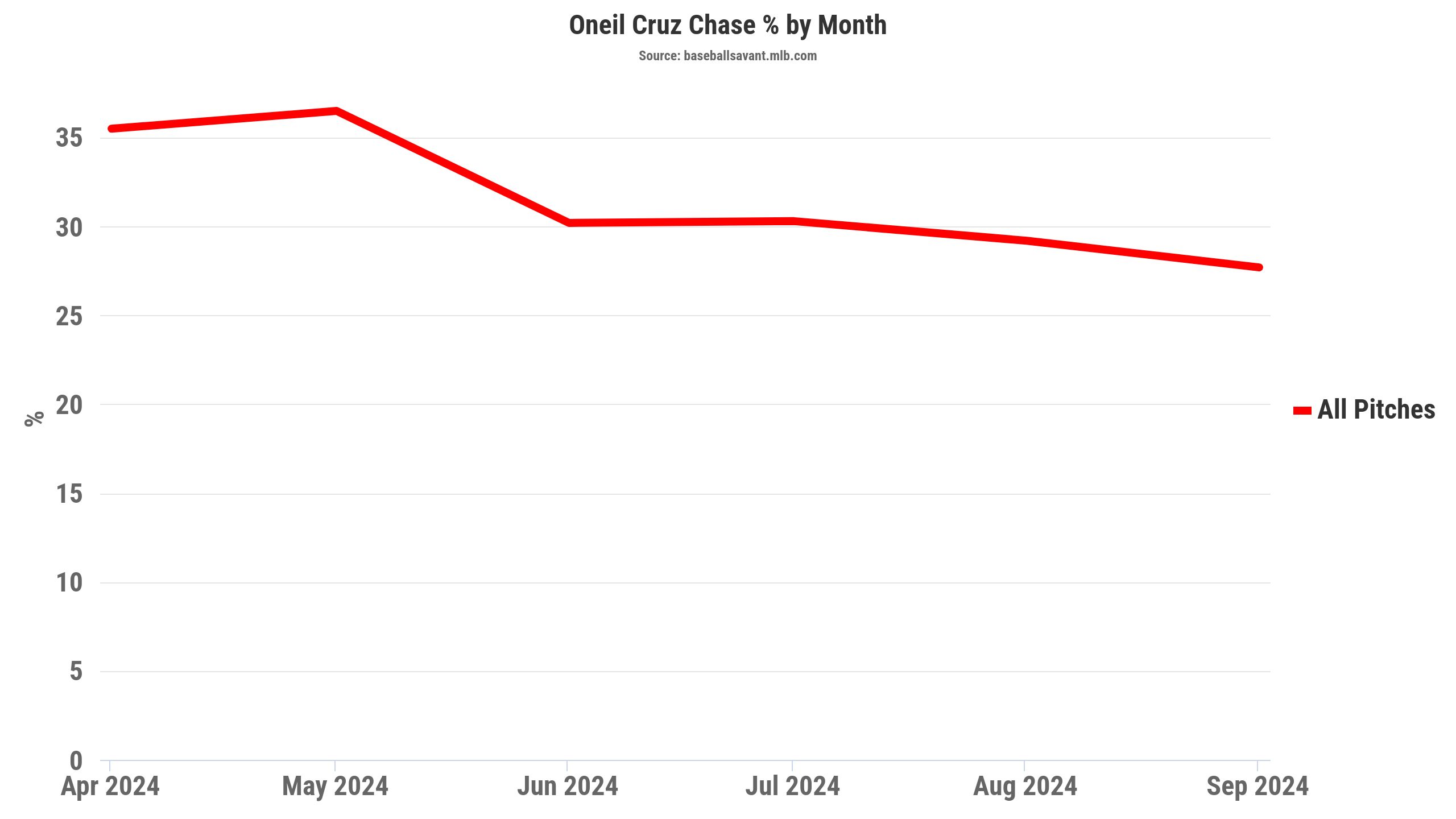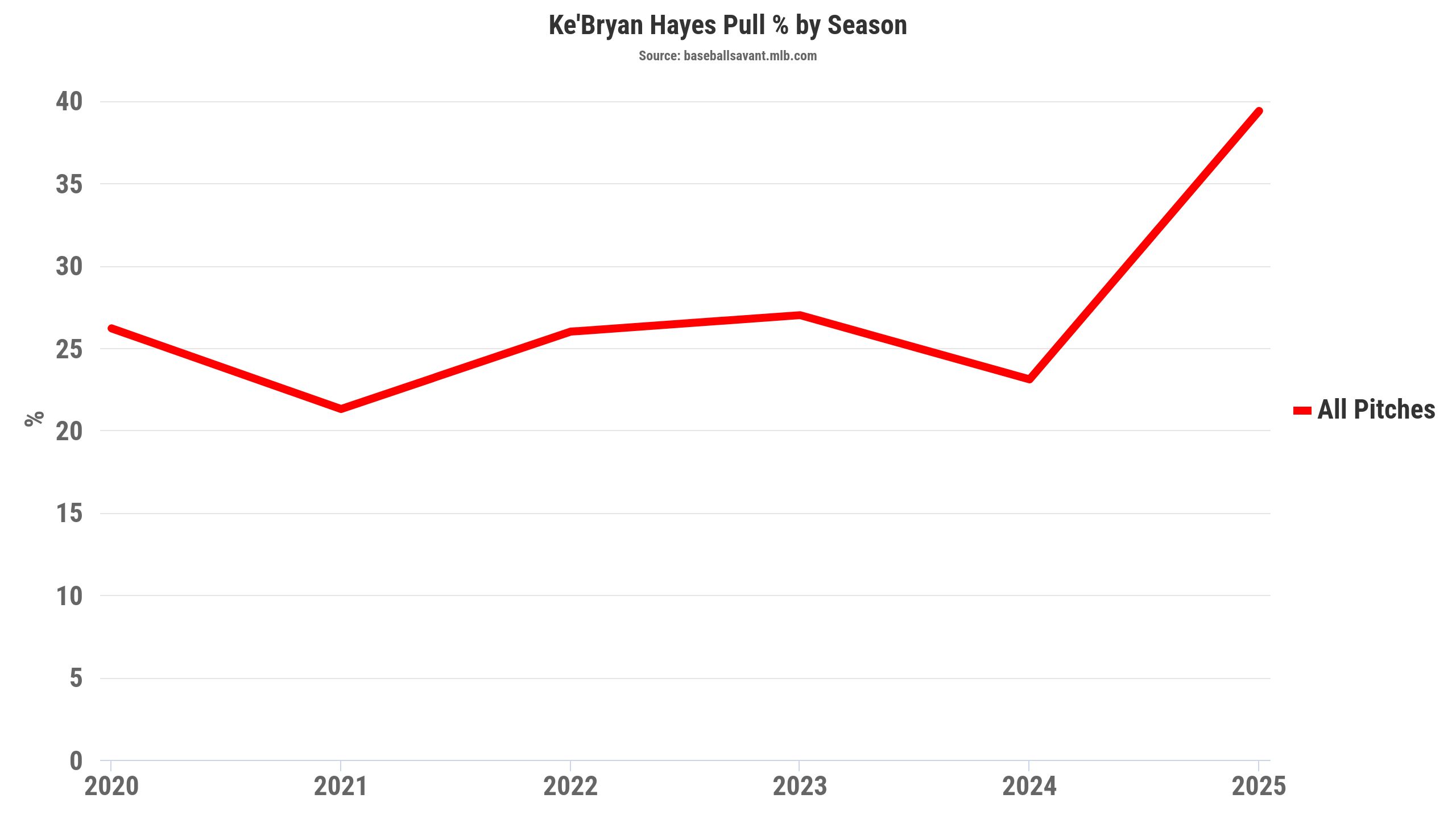This story was excerpted from Alex Stumpf¡¯s Pirates Beat newsletter. To read the full newsletter, click here. And subscribe to get it regularly in your inbox.
Early-season stats are sometimes hard to decipher. The old adage is that you shouldn¡¯t pay attention to stats until Tax Day rolls around. Be wary of how much stock you put into a batting average or OPS until the sample size gets larger.
The same goes for analytics. It¡¯s cool that Andrew McCutchen has had the greatest increase in average exit velocity from last year (88.5 mph to 96.3 mph), but given that he usually hovers in the 89-90 mph range, you can¡¯t realistically expect a massive leap like that to be sustainable for a full season, especially at 38 years old.
With that said, you can¡¯t completely discount stats and peripherals this early in a season. Here are three that could be an indicator for things to come this season. (All stats are entering Tuesday.)
Oneil Cruz: Walk rate jumps from 8.5% to 19.1%
Cruz has had some struggles in the field out of the gate, but he¡¯s been solid offensively, leading the National League with seven steals while posting a .778 OPS. He¡¯s drawn nine walks thus far, which is giving him more opportunities to swipe bags and let his extra-base power play up now that he has another avenue to reach base.
This spike in walks isn¡¯t coincidental. Cruz is doing some good things at the plate, including chasing less. He¡¯s swung at 29.8% of pitches out of the zone entering play Tuesday, which is a tick higher than the league average of 28.5%, but far less than what it used to be. Cruz became more selective at the plate starting around June of last year, drastically decreasing his chase rate:

With fewer chases comes other good peripherals, like his whiff rate dropping from 34.1% to 25%. Will his walk rate still stick at 19.1% for a full season? Eyeballing it, that might be tough, but if he continues those good trends he¡¯s shown at the plate, it should jump significantly compared to 2024.
Ke'Bryan Hayes: Pull percentage has gone from 23.1% to 39.4%
Hayes¡¯ six-game hitting streak came to a close Tuesday, but he¡¯s off to a pretty good start thus far. His batted-ball profile has a lot to do with that. Hayes has usually gone to the opposite field for most of his career, but this year, we¡¯re seeing him pulling the ball more than he ever has before:

Why does this matter? In his career, he¡¯s had a .616 slugging percentage to his pull side and a .440 slug to the opposite field. That¡¯s a significant leap, especially if you¡¯re searching for extra-base hits from a corner infielder.
If he can keep pulling the ball, good things can happen.
Bailey Falter: Breaking ball whiff percentage jumps from 26.1% to 40.7%
OK, some small-sample size bias is probably in play, and Falter is a fastball-first pitcher. With that said, his breaking balls have looked sharp out of the gate. His curveball whiff rate has jumped from 20.7% to 35.3%, and his slider has gone from 28.7% to 50%.
Falter said this spring that he worked on his slider with new assistant pitching coach Brent Strom this winter, and it¡¯s getting another two inches of drop and an extra inch of horizontal run compared to last year. The curveball gave him troubles in the second half of last year, especially after he returned from the injured list, but it looked much more consistent in spring and in the early parts of this season.
Falter does his best work when he has a reliable breaking ball to fall back on. If he has two, he could continue to generate more whiffs.


